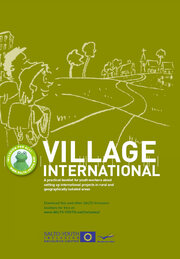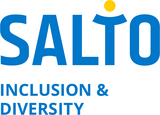The Youth in Action programme
The Youth in Action programme is the European Union's mobility and non-formal education programme for young people and those working with them, in a leisure time context (outside school). The YiA programme promotes active European citizenship, youth participation, cultural diversity and the inclusion of young people with fewer opportunities.
The Youth in Action programme offers various opportunities for young people to set up projects with an international dimension: e.g. group exchanges, voluntary service, democracy projects, group initiatives. It also provides funding for support activities for youth workers to increase the quality of their youth projects.
The Youth in Action Programme is open to young people and youth workers in the so-called 'Programme Countries'. These are (currently) the EU members, the EFTA countries (Norway, Iceland, Liechtenstein) and the pre-accession country (only Turkey for the moment, more can join). There are some (limited) possibilities to set up projects with neighbouring partner countries (South-East Europe, Eastern Europe & Caucasus and the EuroMed countries around the Mediterranean Sea) and beyond.
There are several types of projects that can receive funding. The funding rules of the Youth in Action programme are largely based on a simple system of flat rates and fixed amounts, depending on the number of participants, the activity, its duration, etc.
- Youth Exchanges (where groups of young people come together)
- Group Initiatives (local projects originating from youth groups)
- Democracy Projects (encouraging young people to take part in democracy )
- European Voluntary Service (EVS) (young people volunteer in another country)
- Training & Networking for youth workers (training, seminars, job-shadowing, feasibility visits, partnership building, evaluation meetings, etc.)
Find out more about the Youth in Action programme in the Programme Guide which you can download from http://ec.europa.eu/youth/yia/index_en.html or contact the YiA National Agency in your country: http://ec.europa.eu/youth/contact_en.html
^^ top ^^
The Youth in Action programme & rural youth
The Youth in Action programme should be open for 'ALL' young people. And if certain groups of young people with fewer opportunities are not reached, special efforts should be made to create easier access for them to the opportunities offered by Youth in Action.
Young people from rural and geographically isolated areas are often at a disadvantage compared to their peers, due to lack of infrastructure in small villages and the distance to youth information and activities (as described in the introduction on page 8). In many European countries, the Youth in Action programme is not used by young people and youth groups from remote and underdeveloped areas. In this sense, rural youth is one of the 'inclusion groups'.
Inclusion of 'young people with fewer opportunities' is one of the priorities of the Youth in Action programme. This means in practice that between two equally good projects, the selection committee would give priority to the project that includes disadvantaged youth (provided that you explain well why your participants are at disadvantage). Besides this 'extra focus', there are also a number of extra measures that make it easier for 'inclusion groups' to do a Youth in Action project.
Of course the same general rules apply for you as for any Youth in Action project, but you can get some extra support for an Inclusion project, if justified.
- Exceptional costs: if you have extra costs because you are working with disadvantaged groups, you can claim these expenses in your application e.g. extra costs for transport because of your geographic isolation... It's up to you to ask - within reason!
- In Youth Exchanges, bilateral exchanges (between only 2 countries) are reserved for new organisations or inclusion groups. This allows you to do 'simpler' project (fewer countries) because you have other complications due to your isolated situation.
- You can apply for an Advanced Planning Visit to prepare the inclusion project with your different partner organisations, to organise the exchange in the best possible way, have a look at the infrastructure in the host country and find solutions to potential problems.
- Youth initiatives run by disadvantaged young people (projects for them by them) are allowed to have a youth worker coaching them when needed (and extra money for this).
- The regular duration of a European Voluntary Service project is between 2 and 12 months. However, for inclusion projects this can be for periods of 2 weeks onwards, up to a maximum of 12 months, if there are valid reasons for it.
- There is the possibility of making an Advanced Planning Visit, together with the disadvantaged volunteer, to get acquainted with the EVS hosting organisation and project.
- If the EVS volunteer needs extra attention, reinforced mentorship can be funded, if requested and justified in the application form. Also the volunteer can be younger than 18 (16 or 17) if there are reasons for it.
NOTE
Every country in Europe is different. Therefore your Youth in Action National Agency will have to judge if your requests are reasonable, considering your 'geographical disadvantage' in your context. It's up to you to explain why.
- More about specific measures for inclusion in the European Commission's 'Inclusion Strategy for the Youth in Action programme' at www.SALTO-YOUTH.net/InclusionStrategy/
^^ top ^^
 www.salto-youth.net/
www.salto-youth.net/
VillageInternational/

 Protected from exclusion
Protected from exclusion
Downloads
The following downloads are available:
- Village International - setting up international projects with rural youth - 2007
A step by step manual through the different stages of setting up a youth project in your rural or geographically isolated area. With lots of practical tips and tricks. Based on SALTO TC Rural 2007. (Rightclick & download to your PC)
